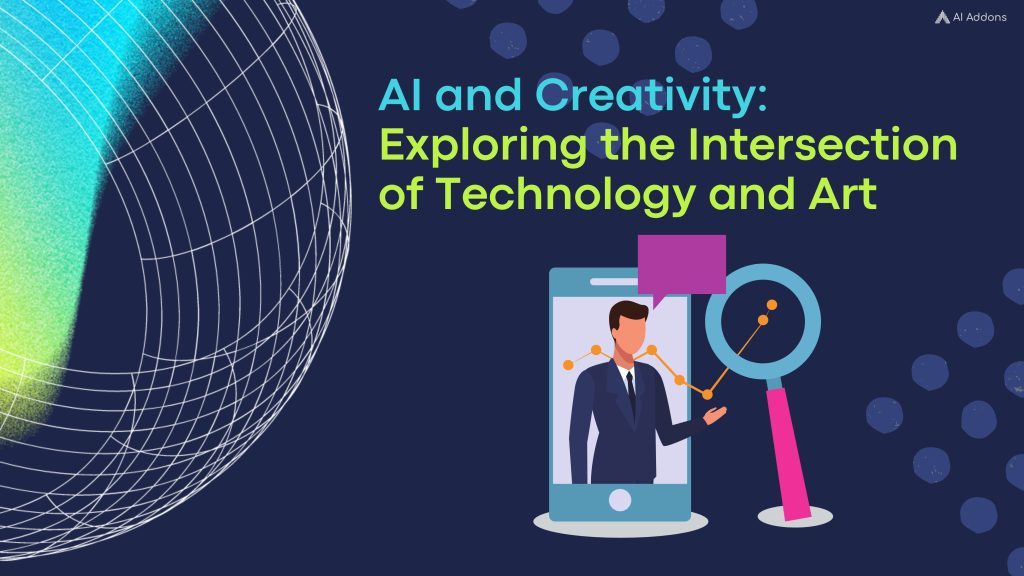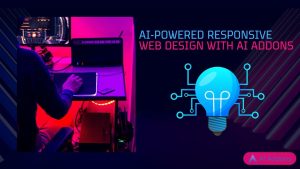Artificial intelligence (AI) plays a major part in our lives and has significantly changed in recent years. The line separating creativity from technology is blending more and more as technologies advance at an unprecedented rate. On the other hand, By automating tasks, enhancing customization, improving accessibility, and speeding the design process, AI is transforming web design.
We may anticipate more breakthroughs and improvements as AI technology develops, which will further transform the process of creating websites. One such popular tool is the AI Addons for Elementor which helps in making the web designing process much easier by combining artificial intelligence.
In this article, we will examine the relationship between creativity and technology, focusing on how AI is affecting different artistic disciplines. We will talk about the advantages, difficulties, and potential future advancements of AI-generated art and design.
The Growth of AI in Creative Industries
Historically, technology has been assigned to a more mechanical and functional role whereas creativity has been seen as a uniquely human trait. The emergence of AI, however, is challenging this divide. Some artists use AI algorithms to create entirely original works or to supplement and improve their own work. AI-generated art, music, and writing have grown in popularity and recognition.
Machine learning, a branch of artificial intelligence that enables computers to learn from their past experiences and advance without explicit programming, is at the center of this interaction. AI can recognize patterns, make judgments, and produce creative work over numerous iterations.
How AI is Changing the Artist and creative process
Many industries, including the art business, are being rapidly transformed by artificial intelligence (AI). AI is opening up new avenues for creativity and innovation and has the ability to enhance the processes used by many designers and artists. Among these advantages are:
- New tools and technologies: One way AI is altering the creative process is by giving artists and designers new tools and technology to employ in their work, such as 3D modeling.
- Automation: Tasks in the creative process, such as image and video editing, are being automated using artificial intelligence (AI). AI algorithms are capable of automatically analyzing photographs and videos and making alterations like deleting distracting aspects, boosting color and contrast, and even creating lifelike animations. This automation can speed up production and save time, allowing designers and artists to concentrate on more creative parts of their work.
- Collaboration between humans and machines: AI is also altering the creative process by enabling new forms of cooperation between humans and machines. AI-powered tools may collaborate with human designers and artists, offering ideas and information to guide their decisions. Because of the machine’s ability to analyze massive volumes of data and spot patterns and trends that humans might have missed, this collaborative process might result in ideas that are more inventive and efficient.
- New Art Viewing Experiences: AI’s capacity to customize the art viewing experience is another way it is transforming the world of art. AI systems are now able to examine a person’s preferences. And also hobbies, and even facial expressions to suggest artwork that is likely to speak to them. This might make art more approachable and interesting to a larger audience.
- Artwork preservation and restoration: AI and Creativity are also being employed in the preservation and restoration of artwork. In order to examine high-resolution photographs of damaged artworks and produce digital reconstructions of what they may have looked like before the damage occurred, researchers, for instance, are utilizing AI algorithms. Ensuring that significant works of art are conserved for future generations. This has the potential to change the practice of art restoration.
The Intersection of Digital Art and Society
The question of how society and digital art interact is intricate and multidimensional, touching on many facets of our lives. Digital art has the potential to significantly influence how we perceive society and the environment around us.
It is possible to use digital art to advance social justice, broaden diversity, and unite people. To engage viewers in vital subjects like social injustice, inequality, and climate change. For example, interactive and immersive digital art displays might be used. Digital art can be used to show societies that are more inclusive and diverse. As well as combat ingrained prejudices and stereotypes.
Additionally, digital art can open up fresh possibilities for teamwork. And also community development by bringing together creators, activists, and communities to effect social change. As a result of the democratization of digital technologies, which has also made it easier for people from all walks of life to create and share digital art, a more inclusive and diverse digital culture has been fostered.
But the intersection of digital art and society also raises important questions about the role of technology in our lives. For instance, worries about data security, privacy, and the effects of social media on mental health have grown in popularity recently. We must think about how digital art affects how we interact with technology. And also how it has shaped our social, cultural, and political systems as it grows more pervasive.
How AI Addons are Influencing Innovation in the World of Technology and Artificial Intelligence
AI add-ons open people up to new possibilities by providing unexpected viewpoints and insights. AI-powered technologies can provide fresh combinations. Also suggests nontraditional techniques, and challenges conventional thinking by analyzing large datasets and identifying hidden patterns. By encouraging people to think creatively and beyond the box, exposure to new ideas fosters breakthroughs and creative solutions.
By adapting solutions to individual preferences, AI addons enable personalized and adaptive experiences. To provide personalized recommendations, user interfaces, and content, these addons can analyze user data, behavior patterns, and preferences. By utilizing AI, developers can produce captivating experiences. That is tailored to the individual needs of users, encouraging a closer connection and inspiring innovative activities.
Directions and Possibilities for the Future of AI
AI and Creativity will inevitably play a larger role as a creative tool and collaborator as it develops and gets better. Here are some potential avenues for AI-generated art in the future:
- The distinction between human and artificial intelligence (AI) creativity may become blurred as AI-generated artwork grows more sophisticated and intricate.
- New forms of art and creative expression may appear as a result of AI’s opening of doors to new methods and trends.
- AI may become a standard component of the creative process. Enabling the creation of ideas, the improvement of compositions, or the improvement of final products.
Conclusion
A new era of digital creation has emerged. As a result of the fusion of art and technology, it provides limitless opportunities for artists and other creatives. The fusion of art and technology—from the emergence of digital art to the significance of technology—has altered our understanding of what art is and how it can be produced and viewed.
As AI and Creativity continue to advance, we can expect further integration of AI add-ons. That will lead to even more remarkable and imaginative achievements in the world of technology and artificial intelligence.
Digital art’s relationship to society poses significant issues of how technology affects our social interactions, communities, and cultural practices. We must take into account how digital art is influencing our social, and cultural system. And also political systems as we continue to investigate its potential.
In the end, the fusion of art and technology offers a singular chance to develop and create in previously unthinkable ways. We must continue to appreciate how art and technology may change how we perceive the world around us. As we traverse the ever-changing terrain of digital innovation.
Follow AI Addons
Facebook:
https://www.facebook.com/aiaddons
Instagram:


